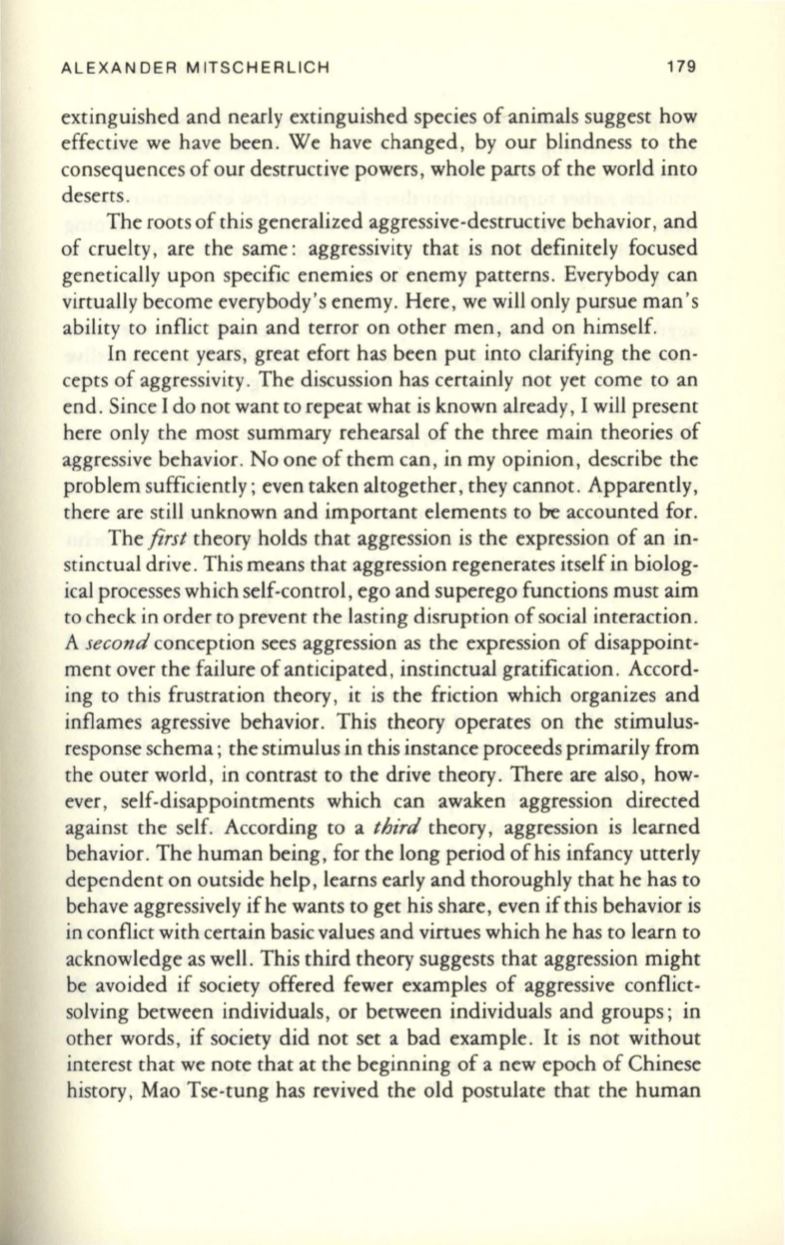
ALEXANDER MITSCHERLICH
179
extinguished and nearly extinguished species of animals suggest how
effective we have been. We have changed, by our blindness to the
consequences of our destructive powers, whole parts of the world into
deserts.
The roots of this generalized aggressive-destructive behavior, and
of cruelty, are the same: aggressivity that is not definitely focused
genetically upon specific enemies or enemy patterns. Everybody can
virtually become everybody's enemy. Here, we will only pursue man's
ability
to
inflict pain and terror on other men , and on himself.
In recent years, great efort has been put into clarifying the con–
cepts of aggressivity . The discussion has certainly not yet come to an
end . Since I do not want
to
repeat what is known already, I will present
here only the most summary rehearsal of the three main theories of
aggressive behavior. No one of them can, in my opinion, describe the
problem sufficiently; even taken altogether, they cannot. Apparently,
there are still unknown and important elements
to
be accounted for.
The
first
theory holds that aggression is the expression of an in–
stinctual drive . This means that aggression regenerates itself in biolog–
ical processes which self-control, ego and superego functions must aim
to check in order to prevent the lasting disruption of social interaction.
A
second
conception sees aggression as the expression of disappoint–
ment over the failure of anticipated, instinctual gratification. Accord–
ing to this frustration theory, it is the friction which organizes and
inflames agressive behavior. This theory operates on the stimulus–
response schema; the stimulus in this instance proceeds primarily from
the ourer world, in contrast to the drive theory. There are also, how–
ever, self-disappointments which can awaken aggression directed
against the self. According
to
a
third
theory, aggression is learned
behavior. The human being, for the long period of his infancy utterly
dependent on outside help, learns early and thoroughly that he has to
behave aggressively ifhe wants to get his share, even if this behavior is
in conflict with certain basic values and virtues which he has
to
learn to
acknowledge as well. This third theory suggests that aggression might
be avoided if society offered fewer examples of aggressive conflict–
solving between individuals, or between individuals and groups; in
other words, if society did not set a bad example.
It
is not without
interest that we note that at the beginning of a new epoch of Chinese
history, Mao Tse-tung has revived the old postulate that the human


